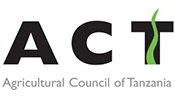The Agricultural Council of Tanzania (ACT) has completed the implementation of the TAP II programme. Initially, the programme duration was 5 years i.e., from Nov. 2014 to October 2019 but was extended to 31st May 2020. The Norwegian Agency for Development Cooperation (NORAD) financed USD 9,664,400 for programme implementation.
The project was implemented in 29 districts of mainland Tanzania. The districts were: Songea R, Namtumbo, Njombe, Kyela, Mbeya R, Mpanda, Sumbawanga, Mbozi, Mbarali, Mufindi, Iringa R, Kilolo, Kilombero, Ulanga, Malinyi, Morogoro R, Mvomero, Kilindi, Kiteto, Babati, Karatu, Monduli, Meru, Moshi R, Handeni, Muheza Kibaha, Bagamoyo and Kisarawe.
The programme’s goal/impact was to contribute to improved food security and poverty reduction through commercially oriented activities and investments. To achieve that the programme pursued 5 strategic objectives, viz.:(i) Agricultural Productivity and Profitability Increased ii) Smallholder Farmers’ Access to Markets Improved iii) Financing and Investment in Agriculture Increased iv) Increased Advocacy and networking v) Cross-cutting Issues Mainstreamed in the programme.
TAP promoted the PPP approach whereby most activities were implemented in collaboration between the private and public sectors. The value chain approach was the main implementation strategy used in TAP II. This strategy brought together different partners and stakeholders whilst simultaneously addressing critical constraints along 9 selected agricultural value chains. TAP management was tasked with the function of coordinating and facilitating partners to do their work better.
The impact of the programme was to contribute to improved food security and poverty reduction in the programme areas. Two selected indicators for the programme impact were: Reduction of income poverty by 17% (MKUKUTA II) and Child malnutrition reduced by 5%. By the end of the project, income poverty and child malnutrition in the programme areas had decreased by 8% and 4%, respectively.
Agriculture GDP, smallholder gross income, and yields of strategic crops were measured. These were used to measure the programme's purpose of increasing agriculture sector growth. Results indicated that, with the exception of agricultural GDP, the other 2 indicators changed positively. The gross income of maize and paddy increased by 54.5% and 83% from the baseline values of TZS 664,000/ha and TZS 2,300,000/ha. In addition, their respective average yields were 4.3 mt/ha and 6.25 mt/ha showing impressive gains as compared to baselines of 1.9 mt/ha and 3 mt/ha, respectively. Average agricultural GDP dropped slightly to 3.4% (from 4% - baseline), which could be attributed to a combination of factors, e.g., restricted cross-border trade and reduced investments in some years
Promotion of Conservation Agriculture (CA) resulted in 26,159 trained farmers compared to the baseline value of 23,500 farmers. Maize productivity under CA rose by 126.3% from the baseline value of 1.9 mt/ha to 4.3 mt/ha during the programme duration. On the contrary, the rise in adoption rates was noThe reason for this is that only 2,757 farmers were practicing CA towards the end of the programme, or 30% of the target.ogramme target. The main reason for this was insufficient support from TSPs to enable farmers to expand CA on their field farms.
Use of improved inputs in the programme areas has increased by 51% from the baseline, exceeding the LOA target of 25%. This is a result of useful practical knowledge imparted to farmers coupled with strong business relationships forged through increasingly robust input distribution networks involving agro-dealers and input suppliers further upstream.
The programme generated 10,699 SRI trained farmers representing 55.2% of the overall target. Total paddy area converted into SRI was 1,977.2ha compared to the programme target of 3,422ha. Average productivity of paddy increased from 3 mt/ha in 2015 to 6.25 mt/ha by the end of 2019; equivalent to a remarkable increase of 108.3%.
A total of 32 smallholder farmer groups and associations (166.7% increase from the baseline value) were using rehabilitated warehouses towards the end of the programme; whilst the average produce stored per season in each rehabilitated warehouse was 180 mt (90% of the LOA target). The number of operational warehouses linked to financial services increased from the baseline of 10 in 2015 to 21 in 2019 out of 13 of the LOA targets.
A significant investment in warehouses was made over the course of the whole programme. This investment aggregated farmers' produce produced by the private sector, estimated at around TZS 3.3 billion * US$ 1.4 million. The stock level in those warehouses increased from 33,000 mt of the LOA target to 41,448 mt reported by the end of 2019, surpassing the LOA target by 25.6%.
The programme – through PASS – linked financial institutions, the majority being commercial banks, to farmer organizations with the view of improving financial services for the latter. Farmers and rural-based agricultural enterprises in 10 target districts (50% achievement) were able to access loans through TAP II efforts. More than 15,000 farmers acquired loans amounting to US$ 1.26 million as working capital to cover crop production costs.
Throughout the programme period, ACT/TAP advocated on various issues related to key policy challenges that acted as obstacles to the achievement of the program objectives. All 6 targeted issues were addressed as planned. These included: institutionalization of CIPs; combating distribution of fake inputs; Food price stabilization; Challenges for Implementation of WRS to smallholder farmers; Effectiveness of Fertilizer Bulk Procurement System (BPS); and Impediments to private sector participation in the implementation of ASDP II. The Government is currently taking some measures to address these issues such as the review of the WRS Act and Fertilizer BPS.

